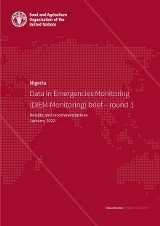Publications
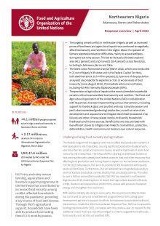
Northeastern Nigeria: Response Overview (April 2022)
05/2022
The ongoing armed conflict in northeastern Nigeria as well as increased prices of food items and agricultural inputs have continued to negatively affect food security and nutrition in the region.
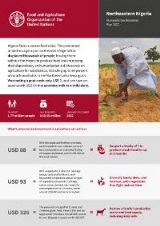
Northeastern Nigeria: Humanitarian Response Plan 2022
04/2022
Nigeria faces a severe food crisis. The protracted armed insurgency in northeastern Nigeria has displaced thousands of people, leaving them without the means to produce food and increasing their dependency on humanitarian aid.
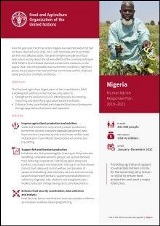
Nigeria: Humanitarian Response Plan 2021
03/2021
Over the past year, food insecurity in Nigeria has reached levels that had not been observed since 2016–2017, with Adamawa, Borno and Yobe still the most affected states.

FAO's role in humanitarian contexts: Saving lives through stronger, more resilient livelihoods - Revised version
04/2020
The number of people experiencing hunger – both chronic and acute – has been persistently high in recent years.
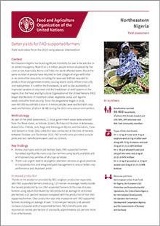
Nigeria: Better yields for FAO-supported farmers
03/2020
Northeastern Nigeria has faced significant instability for over a decade due to an armed insurgency. More than 1.8 million people remain displaced by the crisis across Adamawa,
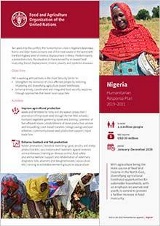
Nigeria: Humanitarian Response Plan 2019–2021
02/2020
Ten years into the conflict, the humanitarian crisis in Nigeria’s Adamawa, Borno and Yobe States remains one of the most severe in the world with the third highest level of internal displacement in Africa.

Resilience analysis in Borno State, Nigeria
06/2019
Borno State, in the northeast of Nigeria, has been reduced from a dynamic and populated rural area into a zone of displacement, hazards and food insecurity due to escalating levels of violence.

Northeastern Nigeria: Assessing FAO’s fuel-efficient stove intervention
03/2019
Armed conflict in northeastern Nigeria – Adamawa, Borno and Yobe States – has driven millions from their homes and uprooted agriculture‑based livelihoods. In worst affected Borno, poor energy access has exposed vulnerable people to a number of challenges linked to food insecurity and malnutrition, deforestation, protection risks and health risks.
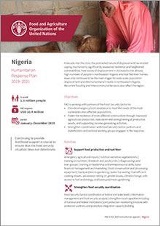
Nigeria: Humanitarian Response Plan 2019–2021
02/2019
A decade into the crisis, the protracted nature of displacement has eroded coping mechanisms, significantly weakened resilience and heightened vulnerabilities.
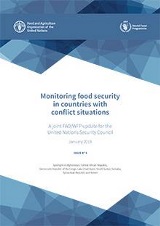
Monitoring food security in countries with conflict situations (Issue No.5-January 2019)
01/2019
The fifth issue of the FAO/WFP update for the United Nations Security Council (UNSC) provides United Nations Security Council (UNSC) members with an overview of the magnitude, severity and drivers of acute food insecurity in eight countries and regions that have the world’s highest burden of people in need of emergency food, nutrition and livelihood assistance as a result of protracted conflict combined with other factors.

